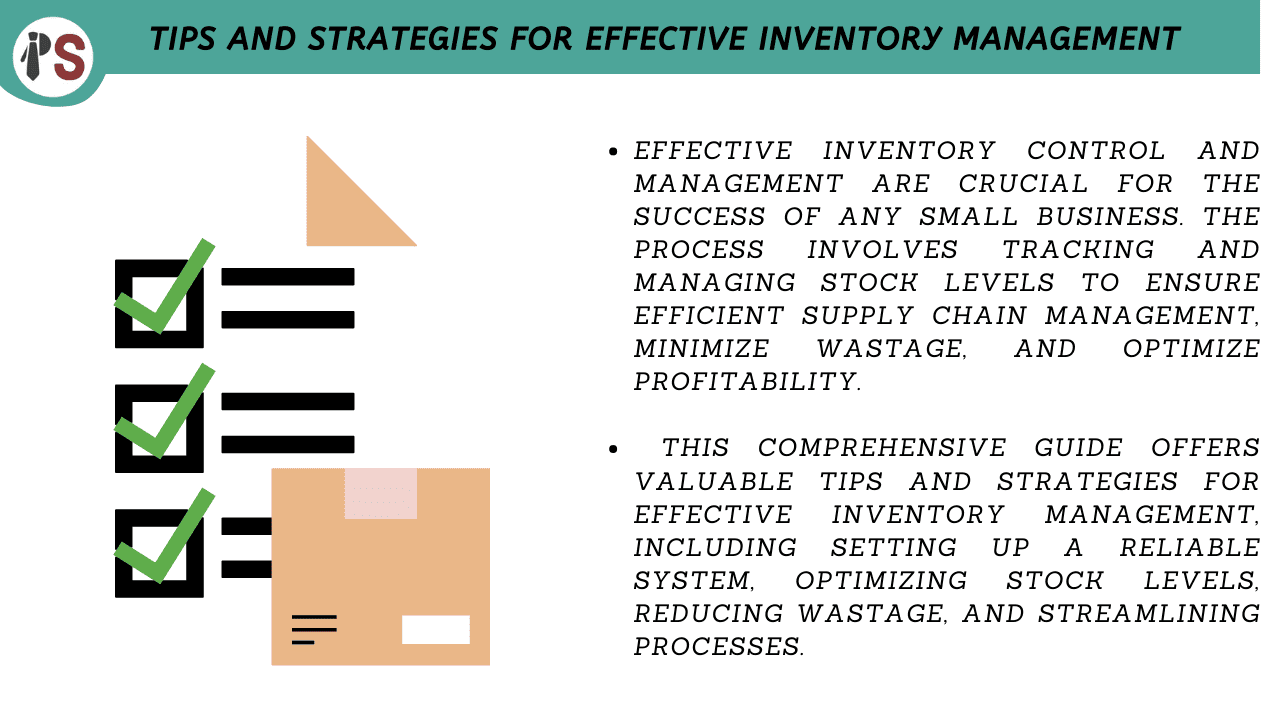
Inventory control and management is an essential aspect of any business that deals with physical goods. Without proper inventory management, businesses can suffer from overstocking, understocking, and other related issues. Effective inventory control and management can help businesses avoid such problems and increase their overall efficiency and profitability. In this blog, we will discuss some tips for better inventory management.
Regularly track your inventory: It is essential to regularly track your inventory to know the exact stock levels and the amount of each product you have on hand. This can help you avoid overstocking, which can tie up valuable capital, or understocking, which can lead to stockouts and lost sales.
Use an inventory management system: Implementing an inventory management system can help automate your inventory tracking and reduce human error. Such systems can provide real-time information about your stock levels, reorder points, and lead times, which can help you make informed decisions about purchasing and restocking.
Optimize your stock levels: Analyze your sales history and forecast future demand to optimize your stock levels. Set minimum and maximum stock levels and reorder points for each product, so you always have enough stock on hand to meet customer demand.
Conduct regular physical inventory checks: Conducting regular physical inventory checks can help identify discrepancies between your stock levels and your records. This can help you identify issues like theft, damage, or errors in your records.
Use a first-in-first-out (FIFO) system: FIFO is a system that assumes the first products you received are the first ones you sell. This system can help you avoid product spoilage, expiration, or obsolescence, as it ensures that you sell the oldest products first.
Set up safety stock: Safety stock is extra inventory you keep on hand to cover unexpected demand or delays in receiving new inventory. Setting up safety stock can help you avoid stockouts and maintain customer satisfaction.
Analyze your inventory turnover: Inventory turnover is the number of times you sell and replace your inventory in a given period. Analyzing your inventory turnover can help you identify slow-moving products, which can tie up valuable capital and space, and make adjustments accordingly.
In conclusion, inventory control and management are essential for any business that deals with physical goods. By implementing the tips outlined above, businesses can optimize their inventory levels, reduce waste, and increase profitability.
At Professional Saathi, we offer a range of business consultancy services that help businesses improve their performance, achieve growth, and overcome challenges.
Copyright 2025 © Created By KTPG PROFESSIONAL SAATHI CORPORATE CONSULTANT PRIVATE LIMITED, All Rights Reserved.
Leave Your Comment